Cultural Insights: The Rich History and Folklore of Langshan Mountain
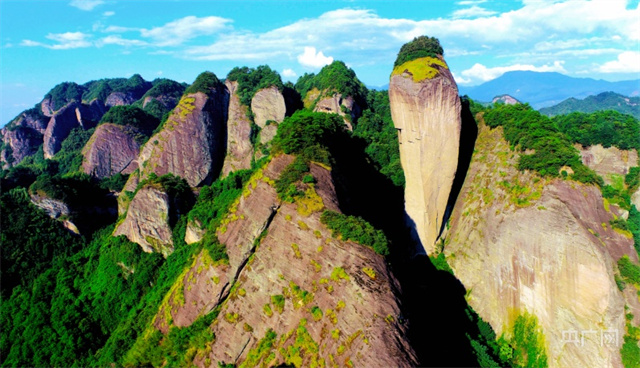
An Essential Guide to Visiting Langshan Mountain
In This Guide
- An Essential Guide to Visiting Langshan Mountain
- The Rich History and Legends of Langshan Mountain
- Main Highlights: What You Absolutely Can’t Miss
- Planning Your Visit: A Practical Guide
- Tickets: Prices, Booking, and Tips
- How to Get There: A Complete Transportation Guide
- Local Cuisine and Accommodation Nearby
- Frequently Asked Questions
- Final Thoughts on Your Trip
Langshan Mountain, often referred to as “the first mountain in Jiangdong,” is a breathtaking natural wonder that seamlessly blends scenic beauty with a rich tapestry of cultural history. Nestled in Nantong City, Jiangsu Province, this majestic mountain is not only a haven for nature enthusiasts but also a significant site for spiritual pilgrims, holding a revered place in both Buddhism and Catholicism. Visitors to Langshan are treated to a captivating array of experiences, from the panoramic views that stretch across the landscape to the tranquil ambiance of ancient temples that dot its slopes.
As you ascend the mountain, you’ll encounter a variety of historic structures, including the renowned Guangjiao Temple and the iconic Zhiyun Pagoda, each offering insights into the profound cultural heritage of the area. The journey to the summit, though requiring a bit of stamina to navigate the numerous stairs, rewards climbers with stunning vistas that are particularly enchanting at sunrise and sunset. The ongoing environmental restoration in the region promises to enhance its natural allure, making it an increasingly popular destination for both locals and international travelers alike.
Whether you’re a history buff eager to delve into the spiritual significance of Langshan or simply seeking a peaceful retreat amidst nature, this mountain is an essential stop on any journey through China. Prepare to immerse yourself in a landscape where every step is steeped in history, every view is a picture-perfect moment, and every visit is an opportunity to connect with the serenity of the natural world.
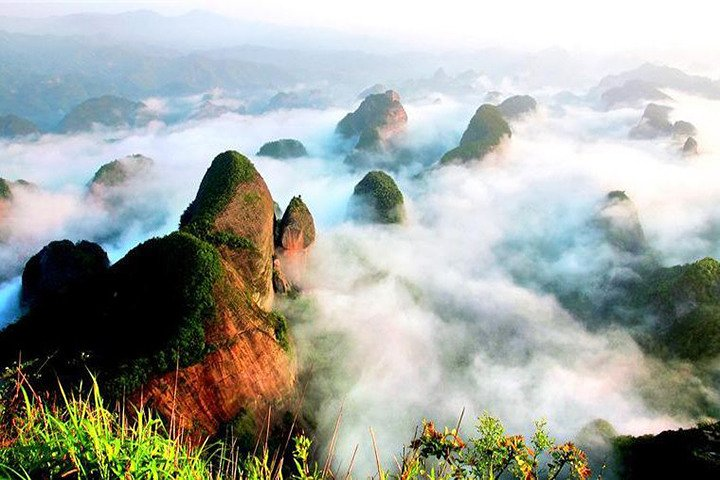
Langshan Mountain.
The Rich History and Legends of Langshan Mountain
Langshan Mountain, known as the “First Mountain in Jiangdong,” is not merely a natural wonder but a tapestry woven from the threads of history, spirituality, and folklore. Nestled in Nantong, Jiangsu Province, this majestic peak stands at 106.9 meters and has long been a site of pilgrimage and reverence, drawing visitors not only for its breathtaking landscapes but also for its rich cultural heritage.
A Historical Overview
Langshan’s significance stretches back through the annals of Chinese history, particularly in relation to Buddhism and local legends. It is recognized as one of the Eight Famous Mountains of Chinese Buddhism, making it a critical site for spiritual seekers and practitioners. The mountain is home to several ancient temples, including the famed Guangjiao Temple and the Zhiyun Pagoda, which date back centuries and reflect the architectural splendor of their times. These structures are not just places of worship; they are living museums that encapsulate the artistic and religious endeavors of past dynasties.
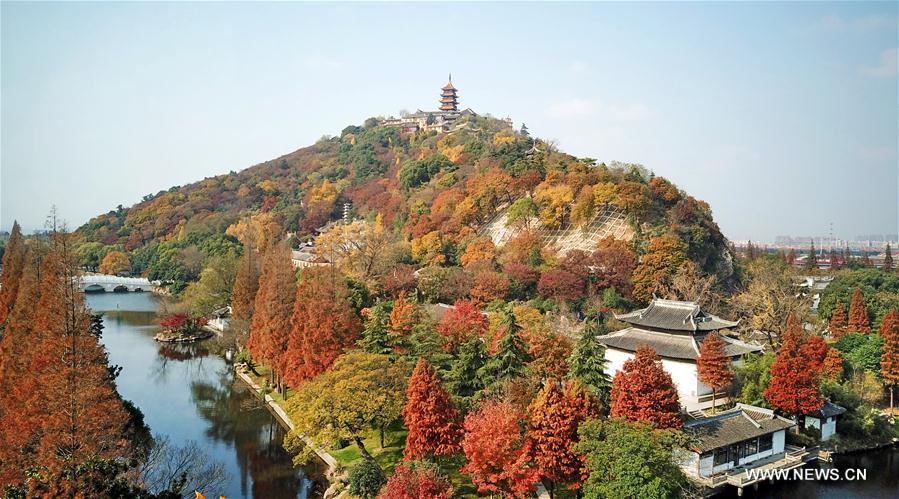
Langshan Mountain.
The mountain’s location has historically made it a strategic point for trade and cultural exchange along the Yangtze River. As such, it has witnessed the ebb and flow of various dynasties, each leaving its mark on the landscape and the local culture. Its serene environment provided a retreat for scholars and poets, inspiring a wealth of literature and art that celebrates the harmony between nature and human creativity.
Legends and Folklore
Langshan is steeped in legends that add to its mystique. One of the most enduring tales is that of the White Snake, a story of love and sacrifice that resonates deeply in Chinese culture. According to local lore, a beautiful white snake transformed into a woman fell in love with a mortal. Their love story, filled with trials and tribulations, is said to be tied to the very essence of Langshan, embodying themes of love, loyalty, and the supernatural.
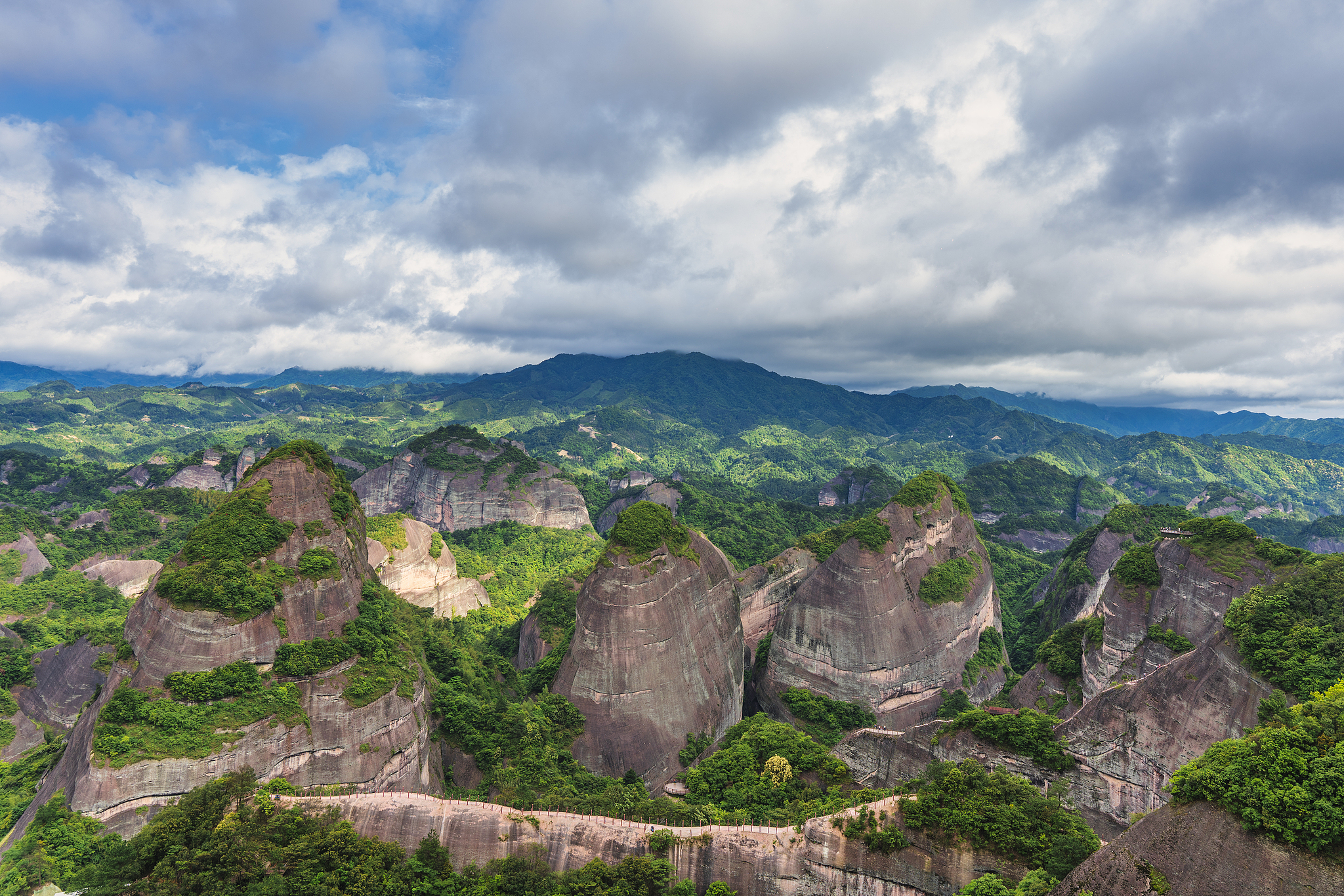
Langshan Mountain.
Another popular legend involves the mountain’s name itself. It is said that a celestial wolf once roamed these hills, guarding the land and its people. The creature was revered for its wisdom and strength, and the mountain became a sanctuary for those seeking guidance. This mystical connection to the wolf has led to the mountain being affectionately referred to as “Wolf Mountain,” further enriching its narrative.
Cultural Significance Today
Today, Langshan Mountain is not only a destination for nature lovers and hikers but also a vibrant cultural hub. Each year, the mountain hosts festivals, including a chrysanthemum exhibition, celebrating the city flower of Nantong. This event draws both locals and tourists, showcasing the area’s floral beauty while honoring its agricultural heritage.
Visitors can explore the numerous trails that wind through the mountain, each step revealing stunning vistas and opportunities for reflection. The ascent to the peak, while challenging, is often described as a transformative experience, providing a sense of connection to both nature and the historical echoes of those who have walked these paths before.
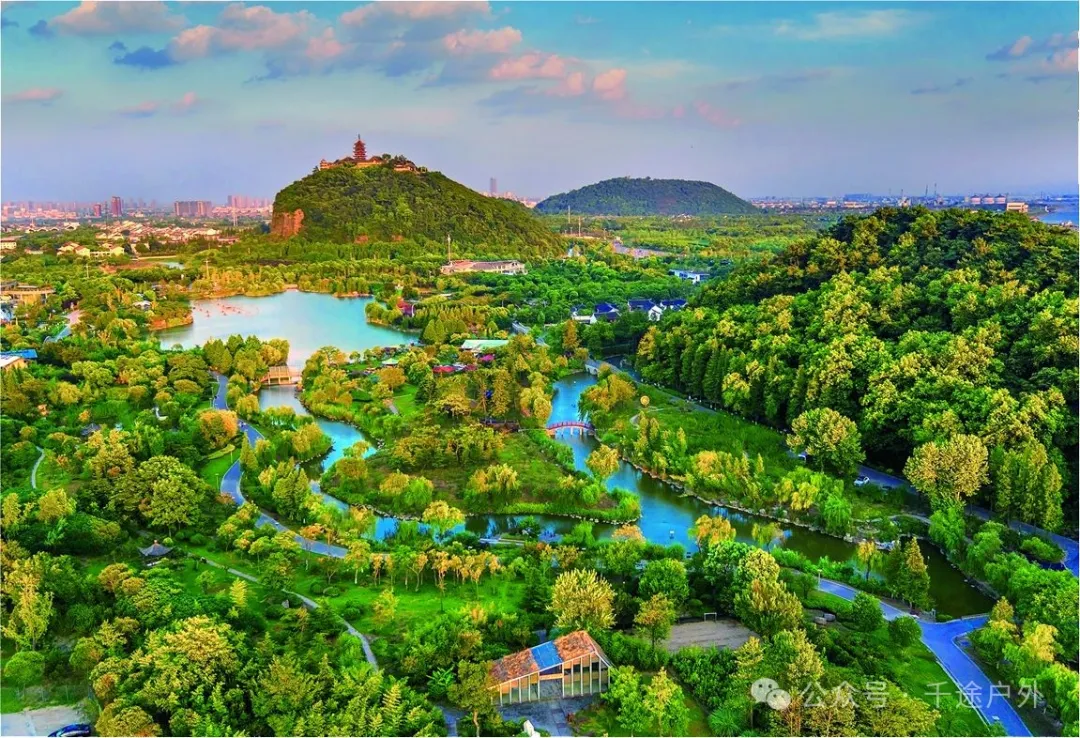
Langshan Mountain.
Conclusion
Langshan Mountain stands as a testament to the rich interweaving of history, spirituality, and natural beauty in China. It invites travelers to immerse themselves in its legends, reflect on its historical significance, and revel in the serene landscapes that have inspired countless generations. Whether you come for the stunning views, the cultural heritage, or the spiritual solace, Langshan offers a unique glimpse into the heart of Jiangsu’s history and the enduring power of its legends.
Main Highlights: What You Absolutely Can’t Miss
Langshan Mountain, located in Nantong, Jiangsu Province, stands as a captivating blend of natural beauty and rich cultural heritage. For international travelers interested in Chinese history and culture, this hidden gem offers an unforgettable experience. Here’s a detailed guide to the main highlights that you simply cannot miss during your visit to Langshan Mountain.

Langshan Mountain.
Breathtaking Panoramic Views
One of the primary draws of Langshan Mountain is its stunning vistas. The climb to the peak is well worth the effort, rewarding hikers with breathtaking panoramic views of Nantong and the surrounding landscape. Whether you visit during the day to admire the vibrant scenery or at night to see the twinkling lights of temples reflected on the Yangtze River, the views are sure to leave a lasting impression.
Historic Temples and Cultural Significance
Langshan Mountain is home to several significant historic temples, including the renowned Guangjiao Temple and the Zhiyun Pagoda. These sites not only embody the architectural elegance of ancient China but also serve as important pilgrimage destinations for both Buddhists and Catholics. Exploring these temples provides a unique opportunity to delve into China’s spiritual landscape and appreciate the harmonious blend of different religious practices.

Langshan Mountain.
Serene Natural Environment
As you navigate the winding paths and numerous stairs of Langshan, you’ll find yourself enveloped in a peaceful atmosphere that is ideal for relaxation and reflection. The ongoing environmental restoration efforts are enhancing the area’s natural beauty, making it a perfect escape from the hustle and bustle of city life. The serene setting is ideal for meditation or simply enjoying the tranquility of nature.
Chrysanthemum Exhibitions
If you time your visit during the chrysanthemum blooming season, you’re in for a treat. As the city flower of Nantong, the chrysanthemum is celebrated with annual exhibitions that showcase stunning floral arrangements against the backdrop of the mountain’s scenic vistas. Participating in these exhibitions offers a delightful glimpse into local culture and traditions.
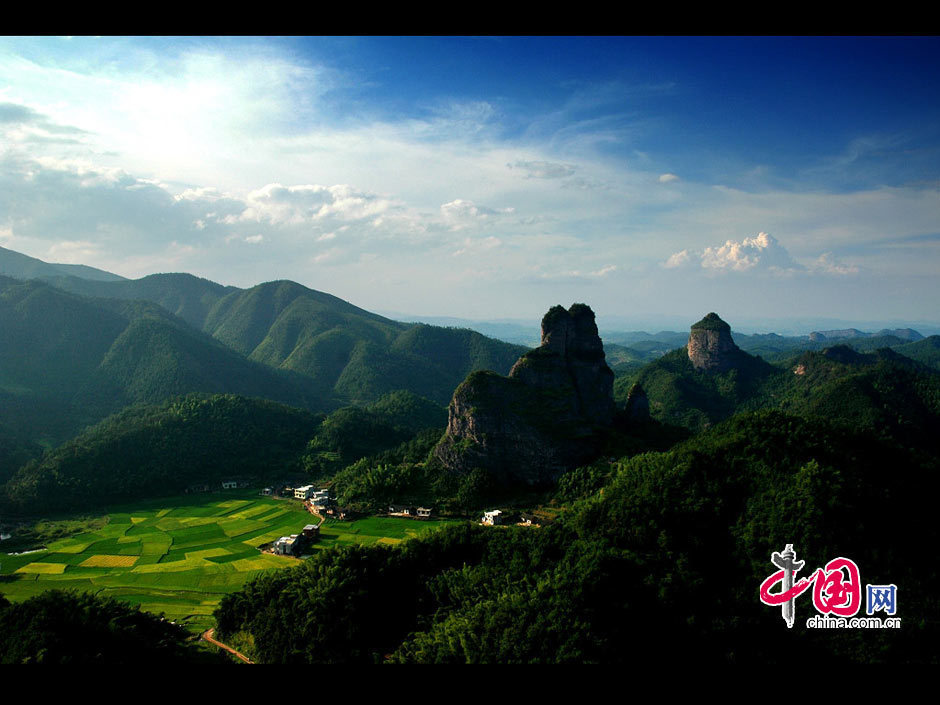
Langshan Mountain.
Engaging with Local Guides
To enrich your experience at Langshan Mountain, consider hiring a local guide. Their insights into the history and significance of the area can greatly enhance your understanding and appreciation of the sites you visit. This personal touch not only makes for a more informative journey but also allows you to engage with the local culture in a meaningful way.
Hiking and Climbing
While the option of taking a cable car is available, embarking on the hike to the summit is highly recommended for a more immersive experience. The trek is invigorating, and every step leads you closer to striking views and historical landmarks. Be prepared for a workout, as the many stairs can be challenging, but the scenery and sense of accomplishment at the top are immensely rewarding.
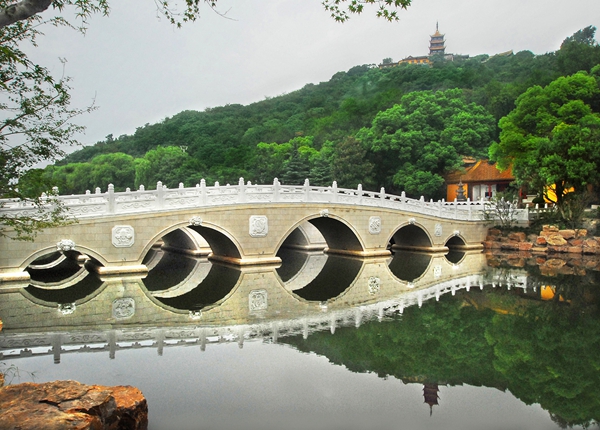
Langshan Mountain.
Plan Your Visit
For a well-rounded experience, aim to visit Langshan Mountain in the early morning or late afternoon. The changing light conditions enhance the beauty of the landscape and the spiritual ambiance of the temples. The scenic area is open year-round, but checking local weather conditions and planning accordingly can help you make the most of your visit.
Langshan Mountain is a treasure trove of natural beauty, spiritual significance, and cultural heritage. Whether you’re scaling its heights, exploring its historic temples, or simply absorbing the serene environment, Langshan promises an unforgettable journey through the heart of China’s rich history and culture.
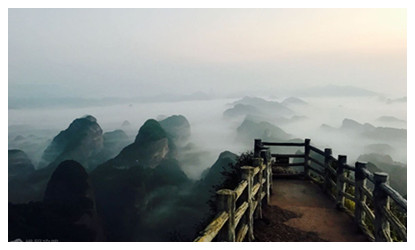
Langshan Mountain.
Planning Your Visit: A Practical Guide
Planning Your Visit to Langshan Mountain
Langshan Mountain, or Langshan Scenic Area, is a captivating destination within Nantong, Jiangsu Province that beautifully blends natural beauty with rich cultural heritage. Known for its stunning vistas and historic temples, this destination is ideal for international travelers interested in exploring the depth of Chinese history and culture. Here’s everything you need to know to plan your visit.
Best Time to Visit
Langshan Mountain can be enjoyed year-round, but the best times to experience its natural beauty are during spring (April to June) and autumn (September to November). During these seasons, the weather is mild, and the landscape is particularly vibrant, making it perfect for hiking and photography.
- Spring: Witness blooming flowers and lush greenery.
- Summer: Expect warmer temperatures, ideal for early morning hikes.
- Autumn: Enjoy the breathtaking fall foliage.
- Winter: Experience a tranquil atmosphere, though access may be limited in severe weather.

Langshan Mountain.
Getting There
Nantong is well-connected by various modes of transportation, making it accessible for travelers from major cities:
- By Air: The nearest airport is Nantong Xingdong Airport, which has domestic flights connecting to cities like Shanghai and Beijing.
- By Train: Nantong has a railway station with connections to major cities in Jiangsu and beyond.
- By Bus: Long-distance buses run regularly from Shanghai, Nanjing, and other cities, making it an affordable option.
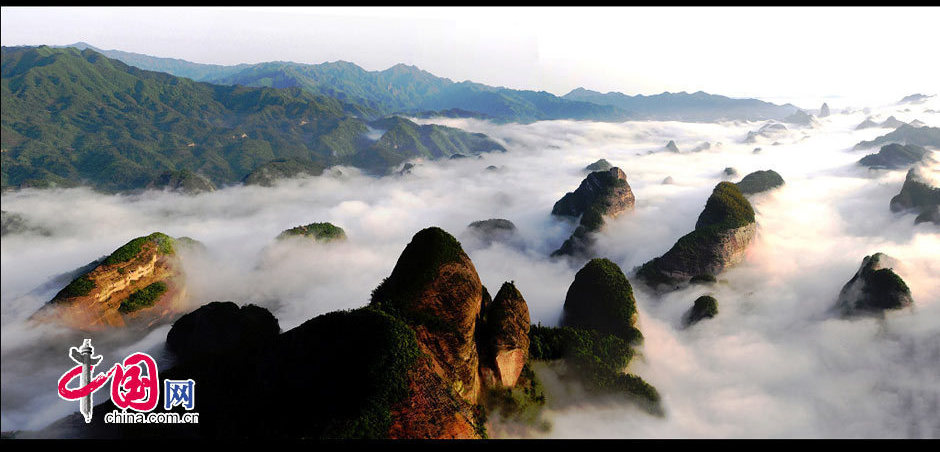
Langshan Mountain.
Once in Nantong, local buses and taxis can take you to the Langshan Scenic Area. The journey from the city center to the mountain takes approximately 30-40 minutes.
What to See and Do
Langshan Mountain is not only a visual delight but also a cultural treasure. Here are some must-see attractions and activities:
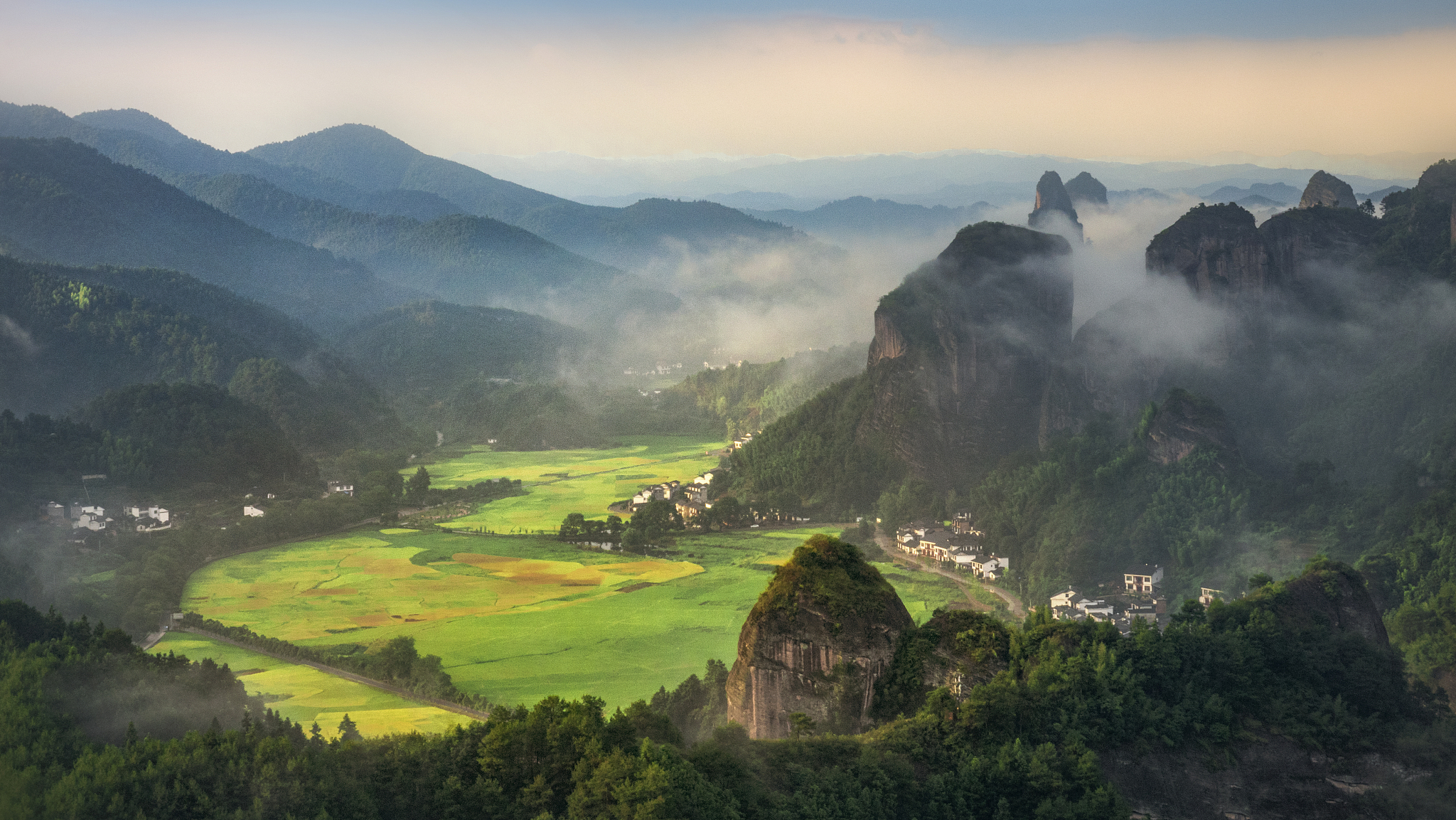
Langshan Mountain.
- Historic Temples: Explore the magnificent Guangjiao Temple and Zhiyun Pagoda, which showcase exquisite architecture and offer a glimpse into Buddhist practices.
- Panoramic Views: Hike to the summit for breathtaking views of Nantong and the Yangtze River, especially stunning at sunrise and sunset.
- Nature Trails: Experience well-maintained hiking paths that wind through scenic landscapes, offering opportunities for photography and tranquility.
- Chrysanthemum Exhibition: If you visit in late autumn, don’t miss the annual chrysanthemum exhibition celebrating the city flower of Nantong.
Hiking Information
The journey to the peak involves climbing numerous stairs, which can be challenging but rewarding. Here are some tips to enhance your hiking experience:
- Wear Comfortable Shoes: Proper footwear is essential for navigating the stairs and trails.
- Bring Water and Snacks: Stay hydrated and energized during your hike.
- Consider a Guide: Engaging a local guide can enrich your experience with historical insights and cultural context.
Practical Tips
- Opening Hours: Langshan Scenic Area is open from 7:00 AM to 4:30 PM during the off-peak season and until 5:00 PM during peak seasons. It’s advisable to check for any seasonal changes or special events.
- Reservations: Due to the popularity of the site, consider making reservations in advance, especially during peak tourist seasons.
- Night Visits: For a magical experience, visit at night to see the illuminated temples against the backdrop of the Yangtze River.
Conclusion
Langshan Mountain is a treasure trove of natural beauty and cultural significance. Whether you seek adventure through hiking, serenity in nature, or a deep dive into Chinese heritage, this stunning destination promises to leave you with unforgettable memories. Enjoy your journey through this spectacular part of China!
Tickets: Prices, Booking, and Tips
Ticket Information for Langshan Mountain
When planning your visit to Langshan Mountain (邵阳崀山景区), understanding the ticketing system and making reservations can enhance your experience. This stunning destination, renowned for its breathtaking views and rich cultural heritage, attracts both local and international travelers. Below is everything you need to know about ticket prices, booking procedures, and essential tips for a smooth visit.
Ticket Prices
- General Admission:
- Peak Season (February to June, October): 70 CNY (approximately $10 USD)
-
Off-Peak Season (January, July, August, September, November, December): 50 CNY (approximately $7 USD)
-
Children and Seniors:
- Children under 1.2 meters in height: Free
-
Seniors (aged 65 and above): Half-price admission
-
Special Discounts:
- Various discounts may be available for groups or through tourism packages, so it’s advisable to check in advance.
Booking Your Tickets
- Online Reservations:
- It is highly recommended to book your tickets in advance through the official Langshan Mountain website or reputable travel platforms to ensure entry, especially during peak tourist seasons.
-
Reservations can typically be made up to 30 days in advance.
-
On-Site Purchase:
-
Tickets can also be purchased at the entrance, but be prepared for long queues during busy periods.
-
Guided Tours:
- Consider joining a guided tour for a more enriching experience. Many tour operators offer packages that include transportation, guided hikes, and cultural insights into the area’s history.
Tips for Your Visit
- Best Time to Visit:
-
The ideal times to visit Langshan Mountain are early spring (March to April) and autumn (September to October) when the weather is mild, and the scenery is particularly stunning.
-
Getting There:
-
Public transport is readily available from nearby cities. Buses connect major urban centers to Nantong, and local taxis can take you directly to the mountain.
-
Prepare for the Climb:
-
Langshan Mountain is characterized by its steep trails and numerous stairs. Wear comfortable hiking shoes and carry water to stay hydrated.
-
Explore at Different Times:
-
Consider visiting at both sunrise and sunset for spectacular views and atmospheric lighting, especially for photography enthusiasts.
-
Engage with Local Culture:
-
Take time to explore the historic temples and cultural sites scattered throughout the mountain, such as Guangjiao Temple and Zhiyun Pagoda, which offer a glimpse into the area’s rich Buddhist heritage.
-
Weather Preparedness:
- Check the weather forecast before your visit and dress in layers, as conditions can change rapidly in the mountains.
By following these guidelines, your trip to Langshan Mountain can be both memorable and enjoyable, allowing you to immerse yourself in the natural beauty and cultural depth that this unique destination offers. Happy travels!
How to Get There: A Complete Transportation Guide
Getting to Langshan Mountain: Your Comprehensive Transportation Guide
Langshan Mountain, nestled in the heart of Jiangsu Province, is a remarkable destination for international travelers seeking to immerse themselves in China’s natural beauty and rich cultural heritage. Whether you’re hiking up its scenic trails or exploring its historic temples, getting to Langshan is straightforward if you follow this guide.
1. Arriving by Air
Nearby Airports:
– Nantong Xingdong International Airport (NTG): The closest airport to Langshan Mountain, located about 20 kilometers (12 miles) away. It mainly serves domestic flights with connections to major cities like Beijing, Shanghai, and Guangzhou.
– Shanghai Pudong International Airport (PVG): Approximately 150 kilometers (93 miles) from Langshan, this international hub offers a wider range of international flights. From here, you can reach Nantong by bus or train.
Getting from the Airport:
– From Nantong Airport: Taxis are available for a direct ride to Langshan Mountain, taking roughly 30-40 minutes.
– From Shanghai Pudong Airport: You can take the Maglev train to Longyang Road, followed by the subway or a taxi to reach Shanghai’s main bus station. From there, buses to Nantong depart regularly, taking about 2-3 hours.
2. Traveling by Train
Train Services:
– Nantong Railway Station: The nearest major train station, about 30 kilometers (18 miles) from Langshan. High-speed trains connect Nantong with major cities like Shanghai, Nanjing, and Suzhou.
– Shanghai to Nantong: High-speed trains leave frequently from Shanghai Hongqiao Railway Station, with the journey taking about 1.5 to 2 hours.
From the Train Station to Langshan:
– From Nantong Railway Station, you can take a taxi or local bus to Langshan Mountain, which will take around 30 minutes.
3. Taking a Bus
Long-Distance Buses:
– From Shanghai: Numerous buses go from Shanghai to Nantong, departing from major bus stations like Shanghai South Long-Distance Bus Station. The trip typically lasts 2-3 hours.
– Local Buses: Once in Nantong, local buses frequently run from Nantong’s main bus station to Langshan. The local bus ride will take approximately 40 minutes.
4. Navigating Locally
Getting to Langshan Mountain:
– Taxi Services: Taxis are readily available in Nantong and provide a convenient and efficient way to reach the mountain.
– Ride-Sharing Apps: Popular apps like Didi are widely used in China and can be an easy way to arrange transport.
5. Exploring Langshan Mountain
Once you arrive, prepare for a rewarding climb filled with stunning views and historical sites. Here are some tips for your visit:
- Hiking vs. Cable Car: While a cable car is available for part of the ascent, hiking up the stone steps offers a more immersive experience.
- Best Times to Visit: Plan your visit for either early morning or late afternoon to enjoy breathtaking sunrises or the beautiful temple lights at night.
- Guided Tours: Engaging a local guide can greatly enhance your understanding of the mountain’s history and cultural significance.
Conclusion
Getting to Langshan Mountain is an adventure in itself, combining modern transportation methods with the opportunity to experience the rich tapestry of Chinese culture and history. Whether you arrive by air, train, or bus, the journey promises to be as delightful as the destination. Prepare for a memorable experience at this hidden gem in Jiangsu!
Local Cuisine and Accommodation Nearby
Culinary Delights and Comfortable Stays near Langshan Mountain
Nestled in the stunning landscapes of Nantong, Langshan Mountain is not only a feast for the eyes but also a culinary haven waiting to be explored. The region offers a delightful array of local dishes that reflect the rich cultural tapestry of Jiangsu Province, alongside a selection of accommodations that cater to various tastes and budgets.
Local Cuisine to Savor
-
Nantong Crab (南通蟹)
Renowned for its sweet and tender flesh, the local crab is a must-try delicacy. Typically steamed and served with a dipping sauce of soy and vinegar, this dish encapsulates the essence of Jiangsu’s freshwater bounty. -
Steamed Dumplings (生煎包)
These delicious buns are filled with juicy pork and a savory broth, then pan-fried to perfection. Enjoy them hot from the steamer for a delightful burst of flavor in every bite. -
Chrysanthemum Tea (菊花茶)
As Nantong is famous for its chrysanthemum exhibitions, don’t miss the opportunity to sip on this fragrant tea. It’s not only refreshing but also renowned for its health benefits, making it a perfect accompaniment to your meals. -
Nantong Noodles (南通面条)
A local specialty, these noodles are often stir-fried with seasonal vegetables and meat, showcasing the simplicity and deliciousness of home-cooked Jiangsu cuisine. -
Suan Ni Bai (蒜泥白)
This cold dish featuring shredded white radish drizzled with garlic sauce is a refreshing way to counterbalance the richness of other dishes.
Where to Stay
After a day of hiking and exploring the breathtaking views atop Langshan Mountain, you’ll want a cozy place to rest your head. Here are some recommended accommodations nearby:
-
Langshan Hotel (崀山宾馆)
Located conveniently close to the mountain, this hotel offers comfortable rooms with stunning views. The on-site restaurant serves traditional dishes, allowing you to indulge in local flavors after your adventures. -
Nantong Shanshui Garden Hotel (南通山水花园酒店)
This picturesque hotel features serene gardens and well-appointed rooms. Guests can enjoy a range of amenities, including a spa and indoor pool, perfect for unwinding after a long day of exploration. -
Hanting Hotel (汉庭酒店)
A budget-friendly option, Hanting Hotel provides comfortable accommodations with essential amenities. It’s a great choice for travelers looking for affordability without compromising on comfort. -
Nantong Grand Hotel (南通大酒店)
One of the city’s more upscale options, this hotel boasts elegant decor, a fitness center, and a restaurant that serves a mix of Western and Chinese cuisine. It’s ideal for those wanting a touch of luxury in their stay. -
Backpacker Hostels
For the adventurous traveler, several hostels in Nantong offer a more communal experience. These hostels are perfect for meeting fellow travelers and often provide guided tours to Langshan Mountain.
Final Thoughts
Langshan Mountain is not only a visual delight but also a culinary treasure trove waiting to be explored. With its rich local cuisine and a range of accommodation options, visitors are sure to create unforgettable memories in this hidden gem of Jiangsu Province. Whether you’re savoring the flavors of Nantong or resting after a day of exploration, you’ll find that this region has something special to offer every traveler.
Frequently Asked Questions
Frequently Asked Questions about Langshan Mountain
1. What is Langshan Mountain known for?
Langshan Mountain, located in Nantong, Jiangsu Province, is celebrated for its breathtaking natural scenery, historic Buddhist temples, and serene atmosphere. It is often referred to as “the first mountain in Jiangdong” and is a significant pilgrimage site for both Buddhism and Catholicism.
2. When is the best time to visit Langshan Mountain?
Langshan Mountain can be visited year-round, but the best times are during spring (March to May) and autumn (September to November) when the weather is mild, and the scenery is particularly beautiful. Each season offers unique views, such as blooming flowers in spring and vibrant autumn foliage.
3. How do I get to Langshan Mountain?
Langshan Mountain is easily accessible by public transportation from Nantong. Visitors can take a taxi or local bus from the city center to the mountain area. For those traveling from farther cities, Nantong has excellent connections via trains and buses.
4. Are there any hiking trails on Langshan Mountain?
Yes, Langshan Mountain features various hiking trails that lead to stunning viewpoints. The trails include many steps, so be prepared for a climb. Hiking is recommended over taking the cable car for a more immersive experience with nature and history.
5. What should I bring when visiting Langshan Mountain?
It’s advisable to wear comfortable hiking shoes and dress in layers, as the weather can change quickly. Bringing water, snacks, and a camera for the picturesque views is also recommended. If you plan to explore the temples, consider bringing a small donation for local charities.
6. Are there accommodations near Langshan Mountain?
While Langshan Mountain itself does not have accommodations, Nantong offers various hotels and guesthouses that are just a short drive away. Options range from budget-friendly hostels to more luxurious hotels, catering to different preferences and budgets.
7. Can I visit the temples on Langshan Mountain?
Absolutely! Langshan Mountain is home to several historic temples, including Guangjiao Temple and Zhiyun Pagoda. These sites offer a glimpse into the rich cultural and spiritual heritage of the area. Visitors are encouraged to explore these temples and learn about their significance.
8. Is it possible to visit Langshan Mountain at night?
Yes, visiting Langshan Mountain at night can provide a unique experience. The illuminated temples offer a stunning view against the night sky, especially with the backdrop of the nearby Yangtze River. However, ensure to check local safety guidelines and park hours before planning a night visit.
Final Thoughts on Your Trip
As your journey through the breathtaking landscapes and rich cultural tapestry of Langshan Mountain comes to a close, take a moment to reflect on the myriad experiences that have unfolded throughout your visit. This hidden gem, nestled in the heart of Nantong, offers not just stunning panoramic views and serene natural beauty, but also a profound connection to China’s spiritual heritage.
Embrace the Serenity
Standing atop Langshan, with the gentle breeze whispering through ancient trees and the distant sounds of nature, you are reminded of the tranquility that this mountain provides. The climb, though demanding, rewards you with vistas that capture the essence of Jiangsu’s landscapes, a visual feast that lingers long after you descend.
A Cultural Mosaic
Your exploration of historic temples and Buddhist monuments adds depth to your understanding of Chinese culture. The reverence found in places like Guangjiao Temple and Zhiyun Pagoda echoes the spiritual significance of this site, inviting reflection and appreciation for traditions that have stood the test of time. Engaging with local guides enriches your journey, offering insights that elevate your experience from mere sightseeing to a deeper cultural immersion.
Nature’s Restoration
As you leave Langshan, consider the ongoing environmental restoration efforts that are making this area not only more accessible but also more sustainable. The commitment to preserving this natural paradise ensures that future generations will also have the opportunity to experience its magic.
Final Reflections
In closing, let your memories of Langshan Mountain serve as a reminder of the beauty that can be found in both nature and history. Whether it was the sense of achievement from your climb, the peaceful moments spent in reflection, or the inspiring sights that filled your camera, each moment contributes to the rich tapestry of your travels in China.
As you continue your journey, carry with you the essence of Langshan—a place where nature meets spirituality and history is alive in every step. May your experiences here inspire you to delve deeper into the wonders of this remarkable country. Safe travels!